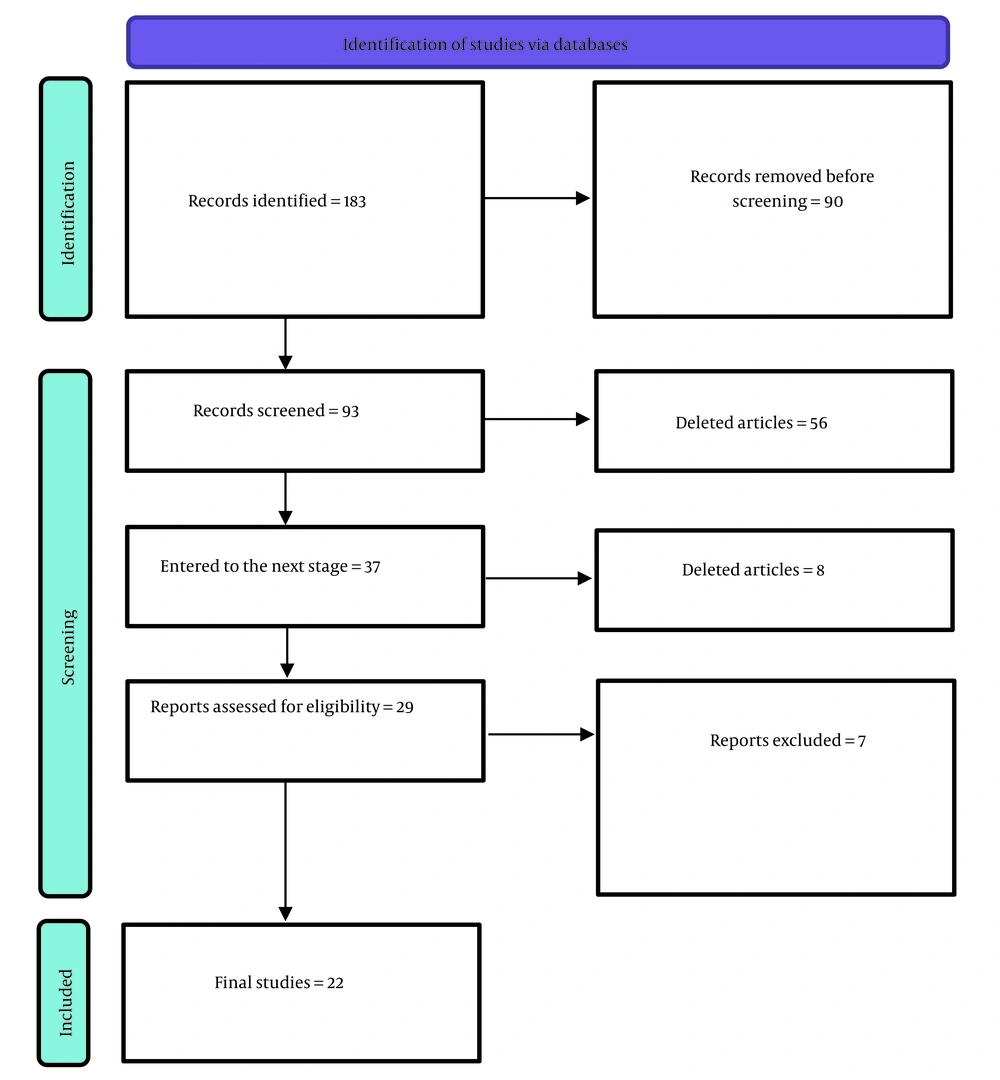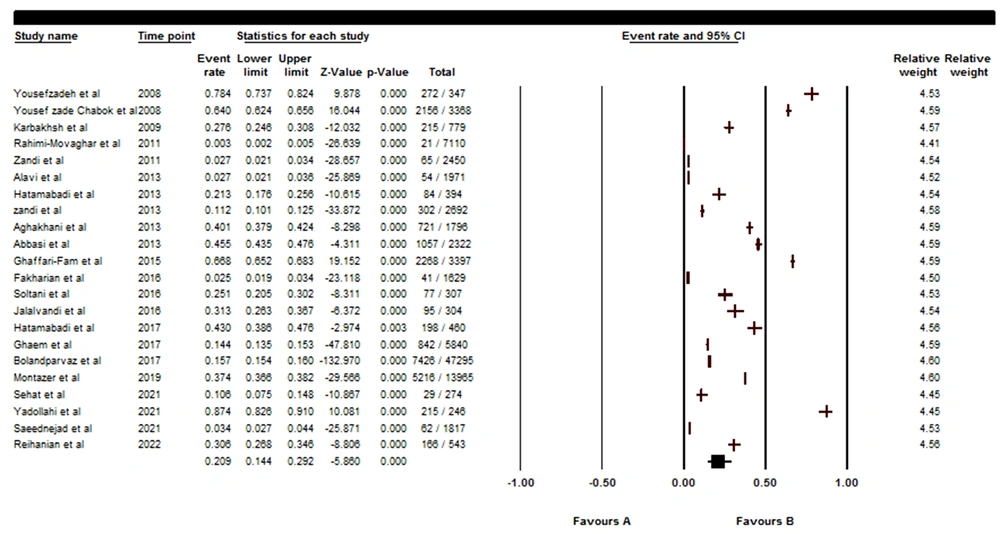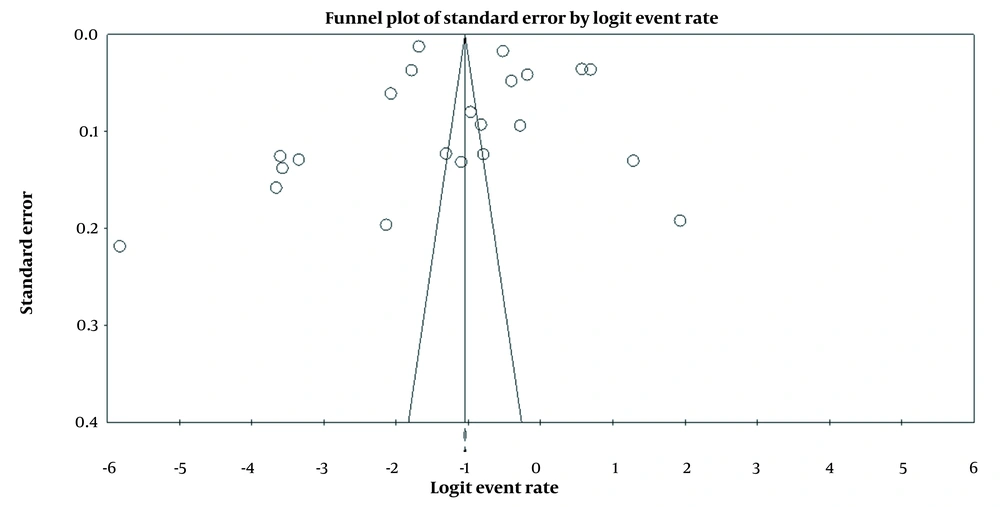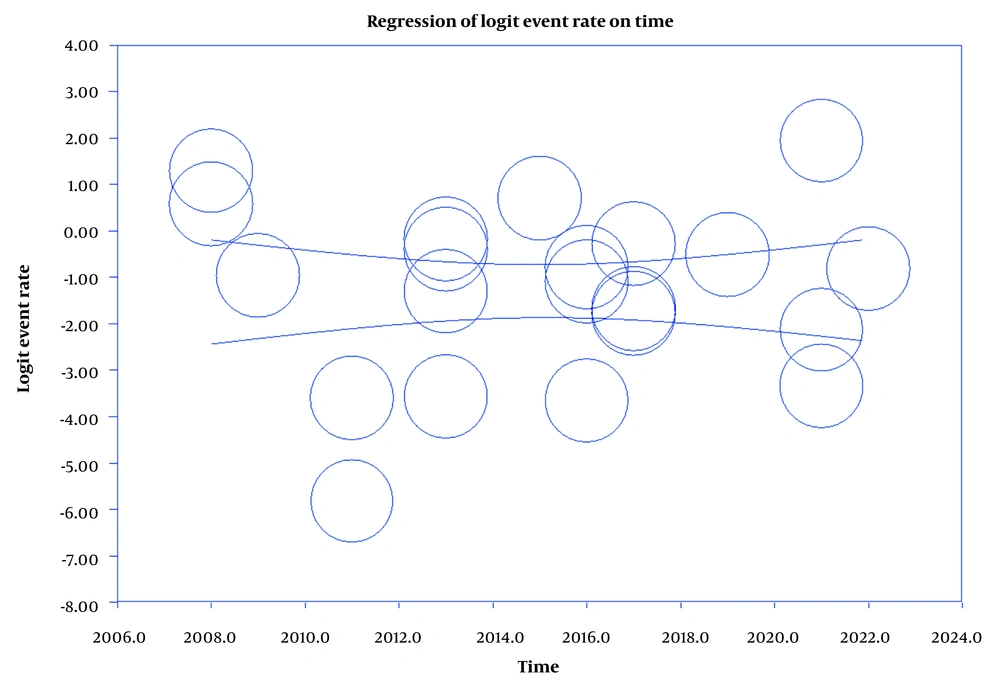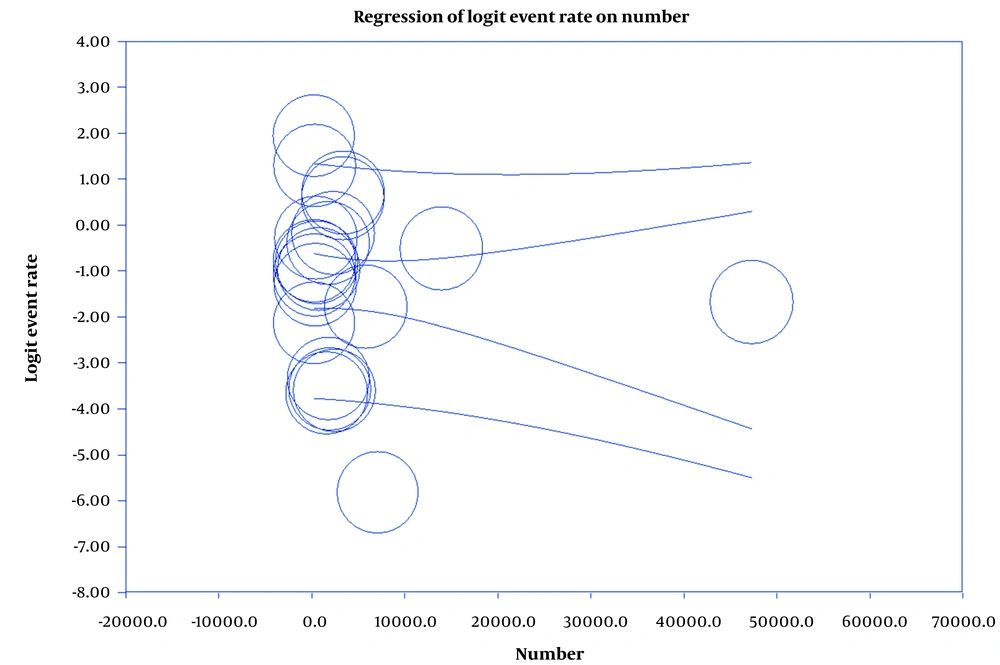1. Context
Trauma is considered one of the important global challenges. It has become an important problem with the advancement of science and technology. It has now become one of the common causes of death and disability (1-3). Trauma is one of the most important causes of the absence of young forces in economic and social activities. In addition to reducing the abilities of the young population and active forces in society, it causes economic society challenges by involving health and rehabilitation caregivers (4-6).
Trauma can be divided in terms of its type and causes. Trauma can be divided into various types, including vascular trauma, dental trauma, facial trauma, penetrating and non-penetrating trauma, as well as head trauma (7-9). The causes of trauma can also include falls, violence and fights, vehicle accidents, and sports events. Head trauma (HT) is one of the most important types of trauma that has a high prevalence and may occur in different age groups, ranging from infants to the elderly (10-12).
Accidents alone are the second leading cause of years of life lost worldwide. There have been various systematic review studies or meta-analysis studies on the prevalence of trauma in Iran. In this regard, in a meta-analysis of nine articles, Shokri et al. (13) reported the overall prevalence of neonatal birth trauma in 42,327 Iranian infants was equal to 2.7% (95% CI (1.3, 5.3)). Shokri et al. (14) also stated that the prevalence of dental trauma among Iranian children was between 8.9% - 36.9%. In a review study, Maleki et al. also mentioned that the causes of trauma among Iranian children included falls, sports accidents, burns, and drowning (15). Considering the high prevalence of trauma in the world as well as in Iran, it is important to conduct extensive studies on the prevalence of trauma, especially HT (16).
Head trauma negatively affects most aspects of life and can cause physical, cognitive, and social limitations in the patient, all of which affect the well-being of patients (17, 18). Head trauma is one of the most important causes of death, and its frequency in developed countries is estimated at 266 per 1,000 people. Depending on the trauma site, the patient may experience a wide range of mild to moderate injuries, resulting in various complications, including disability, amputation, or even death (19, 20). Also, considering that HT is one of the important risk factors for nerve damage, HT can expose the patient to Parkinson's, Alzheimer's, or other neurological disorders and cause serious long-term damage (21).
2. Objectives
Considering the importance of the prevalence of all types of traumata, especially HT, this study was conducted to measure the prevalence of HT in Iran by systematic review and meta-analysis.
3. Methods
The present systematic review and meta-analysis was conducted according to the PARISMA checklist (22) to assess the prevalence of HT in Iran.
3.1. Database search strategy
3.1.1. Selection of Studies
In this study, the PICO approach was carried out with the selection criteria of the articles as follows: P: Patients with trauma in Iran; I: Prevalence of HT; C: Comparison of HT with other trauma; and O: Frequency (%) HT in total trauma in articles.
3.1.2. Paper Selection and Data Extraction
The search was conducted by two researchers completely independently from October 1 to November 30, 2022. The search was conducted among the articles published in the years 2007 to 2022 in national databases (SID, Magiran, and Irandoc) and international databases (Web of Science, PubMed, and Scopus). Also, the search was conducted using the keywords of “head trauma”, “traumatic brain injury”, “Iran”, “trauma”, and “prevalence”.
3.1.3. Inclusion and Exclusion Criteria
Inclusion criteria: Articles published (Persian and English) between 2002 - 2022 in which the prevalence of HT a (number and percentage) was reported. Exclusion criteria: Articles with incomplete data.
3.2. Data Extraction
Questions related to the number of patients (men, women, and overall), average age, city, and overall prevalence of HT were used.
3.3. Statistical Analysis
Analysis was done by CMA v.2.0 software and using a random model, funnel plot, and meta-regression analysis.
4. Results and Discussion
Table 1 shows the quality status of the articles. If any articles scored less than 3, they were considered weak in the group and excluded from the study. Also, in the case of obtaining a score of 4 to 6, it was considered to mean average quality and a score of 6 and above was considered to mean high quality. In the initial search, 183 articles were found, 90 articles were removed in the initial review, and finally, 22 articles were included in the meta-analysis stage. In the 22 reviewed articles, the time of publication of the articles was between 2008 and 2022, and the total sample size was equal to 99,306. Also, in relation to the method of conducting studies, two studies were conducted using a retrospective method, two articles were conducted using a prospective method, and other articles were conducted using a cross-sectional method (Table 2). Moreover, the sample size ranged from 264 patients in the study by Yadollahi and Sahmeddini (23) to 47,295 patients in the study by Bolandparvaz et al. (24). The HT prevalence also ranged from 0.3% in the study by Rahimi-Movaghar et al. (25) to 77.2% in the study by Yousefzadeh et al. (26) (Table 2). Also, Figure 1 shows flowcharts for systematic review (Figure 1).
| - | Authors | Years | Sample Size | Mean Age | Male (n) | Female (n) | Type of Study | Prevalence | Total Score |
|---|---|---|---|---|---|---|---|---|---|
| 1 | Aghakhani et al. (27) | √ | √ | √ | - | - | √ | √ | 5 |
| 2 | Rahimi-Movaghar et al. (25) | √ | √ | √ | √ | √ | √ | √ | 7 |
| 3 | Fakharian et al. (28) | √ | √ | √ | √ | √ | √ | √ | 7 |
| 4 | Reihanian et al. (29) | √ | √ | √ | √ | √ | √ | √ | 7 |
| 5 | Alavi et al. (30) | √ | √ | √ | √ | √ | √ | √ | 7 |
| 6 | Yousef Zade Chabok et al. (31) | √ | √ | √ | √ | √ | √ | √ | 7 |
| 7 | Saeednejad et al. (32) | √ | √ | - | - | - | √ | √ | 4 |
| 8 | Soltani et al. (33) | √ | √ | √ | √ | √ | √ | √ | 7 |
| 9 | Hatamabadi et al. (34) | √ | √ | - | - | -- | √ | √ | |
| 10 | Bolandparvaz et al. (24) | √ | √ | √ | √ | √ | √ | √ | 7 |
| 11 | Ghaffari-Fam et al. (35) | √ | √ | - | - | - | √ | √ | 4 |
| 12 | Yousefzadeh et al. (26) | √ | √ | √ | - | - | √ | √ | 5 |
| 13 | Yadollahi and Sahmeddini (23) | √ | √ | - | - | - | √ | √ | 4 |
| 14 | Montazer et al. (36) | √ | √ | - | - | - | √ | √ | |
| 15 | Zandi and Seyed Hoseini (37) | √ | √ | √ | √ | √ | √ | √ | 7 |
| 16 | Zandi et al. (38) | √ | √ | - | - | - | √ | √ | 4 |
| 17 | Jalalvandi et al. (39) | √ | √ | - | √ | √ | √ | √ | 6 |
| 18 | Hatamabadi et al. (40) | √ | √ | - | - | - | √ | √ | 4 |
| 19 | Ghaem et al. (41) | √ | √ | - | - | - | √ | √ | 4 |
| 20 | Abbasi et al. (42) | √ | √ | - | - | - | √ | √ | 4 |
| 21 | Sehat et al. (43) | √ | √ | - | - | - | √ | √ | 4 |
| 22 | Karbakhsh et al. (44) | √ | √ | - | - | - | √ | √ | 4 |
The Quality of the Articles
| - | Authors | Years | Gender | Age, y | City | Type of Study | Sample Size | Prevalence (N) | |
|---|---|---|---|---|---|---|---|---|---|
| Male | Female | ||||||||
| 1 | Aghakhani et al. (27) | 2013 | - | - | 31.9 | Urmia | Retrospective | 1,796 | 721 |
| 2 | Rahimi-Movaghar et al. (25) | 2011 | 17 (81) | 4 (19) | 28.7 ± 14.8 | Tehran | Retrospective | 7,110 | 21 |
| 3 | Fakharian et al. (28) | 2016 | 38 (97.2) | 3 (7.3) | 36.6 ± 20.6 | Kashan | Cross-sectional | 1,629 | 41 |
| 4 | Reihanian et al. (29) | 2022 | 116 (69.8) | 50 (30.2) | 0 - 15 | Northern Iran | Cross-sectional | 543 | 166 |
| 5 | Alavi et al. (30) | 2013 | 44 (81.48) | 10 (19.52) | Male: 24.8, Femail: 27.4 | Bandar-Abbas | Cross-sectional | 1,971 | 54 |
| 6 | Yousef Zade Chabok et al. (31) | 2008 | 2,582 (76.7) | 781 (23.3) | 31.35 ± 18.16 | Rasht | Cross-sectional | 3,368 | 2,156 |
| 7 | Saeednejad et al. (32) | 2021 | - | - | - | Tehran | Cross-sectional | 1,817 | 62 |
| 8 | Soltani et al. (33) | 2016 | 58 (75) | 19 (25) | 32 | Tehran | Routine-data-based study | 307 | 77 |
| 9 | Hatamabadi et al. (34) | 2017 | - | -- | - | Tehran | Cross-sectional | 460 | 198 |
| 10 | Bolandparvaz et al. (24) | 2017 | 5,933 (34.7) | 1,493 (30.9) | 30 (23 - 44) | Shiraz | Cross-sectional | 47,295 | 7,426 |
| 11 | Ghaffari-Fam et al. (35) | 2015 | - | - | - | Azerbaijan | Cross-sectional | 3,397 | 2,268 |
| 12 | Yousefzadeh et al. (26) | 2008 | - | - | 0 - 14 | Guilan | Cross-sectional | 347 | 272 |
| 13 | Yadollahi and Sahmeddini (23) | 2021 | - | - | - | Shiraz | Cross-sectional | 246 | 215 |
| 14 | Montazer et al. (36) | 2019 | - | - | - | Mazandaran | Cross-sectional | 13,965 | 5,216 |
| 15 | Zandi and Seyed Hoseini (37) | 2013 | 268 (88.7) | 34 (11.3) | 41.8 ± 21.4 | Hamedan | Case-control | 2,692 | 302 |
| 16 | Zandi et al. (38) | 2011 | - | - | - | Hamedan | Prospective study | 2,450 | 65 |
| 17 | Jalalvandi et al. (39) | 2016 | 52 (29.1) | 43 (34.4) | - | Kermanshah | Cross-sectional | 304 | 95 |
| 18 | Hatamabadi et al. (40) | 2012 | - | - | - | Tehran | Cohort | 394 | 84 |
| 19 | Ghaem et al. (41) | 2017 | - | - | - | Shiraz | Cross-sectional | 5,840 | 842 |
| 20 | Abbasi et al. (42) | 2013 | - | - | - | Shiraz | Cross-sectional | 2,322 | 1,057 |
| 21 | Sehat et al. (43) | 2021 | - | - | - | Kashan | Cross-sectional | 274 | 29 |
| 22 | Karbakhsh et al. (44) | 2009 | - | - | - | Kermanshah | Cross-sectional | 779 | 215 |
The Main Characteristics of the Included Studies a
Figure 2 shows that the overall HT prevalence was 20.9 (95% CI, 14.4 - 29.2) in Iran. Also, Figure 3 shows the funnel plot diagram, and Figures 4 and 5 show the meta-regression of the prevalence of HT based on the year and number of patients of publication of the articles. Also, there was no relationship between the year of publication of articles (P = 0.96, Z-value = 0.05) and sample size (P = 0.41, Z-value = -0.82) with the prevalence of HT.
Diseases related to the head and nervous system can seriously threaten the patient’s life (45-47). Trauma has many types, and its prevalence is high (48, 49). According to the results, the overall prevalence of HT in Iran is 20.9 (95% CI, 14.4 - 29.2). Various studies have been conducted on traumatic brain injury (TBI) prevalence in different age groups. For example, in a study on 42,412 children and adolescents, Nigrovic et al. reported that the TBI prevalence was 42,099 (99%) (16). Aoki et al. also stated that out of 15,441 trauma children in Japan, 6,386 (41.35%) patients had HT (50). Langlois et al. also reported that the TBI prevalence in children aged 0 - 14 years was reported to be about 475,000 (51), which is much more than the results of the present study.
This discrepancy seems to be due to the study population. Further, the TBI prevalence in Thurman's study was 74 per 100,000 people in the emergency department (52). Haarbauer-Krupa et al. also reported that the TBI prevalence was 2.5% (95% CI, 2.3% - 2.7%) during the years 2011 - 2012 (53), which was lower than the results of the present study. This discrepancy may be due to differences in age groups and also the type of study. The current study is a meta-analysis study that was carried out on all age groups, while the aforementioned studies were original and were performed on children.
The TBI prevalence has also been investigated among the adult population in other countries. For example, Gerritsen et al. found that the HT prevalence was equal to 22.1 per 1,000 patients (54), Baiden et al. also concluded that out of 6,314 patients, the TBI prevalence was equal to 208 cases (3.3%) (55), which is much lower than the present study. This discrepancy may be due to the fact that the current study was a meta-analysis, while the above-mentioned studies were original.
5. Conclusions
Considering the high prevalence of HT in Iran, it is necessary to carry out necessary preventive interventions in this field.

